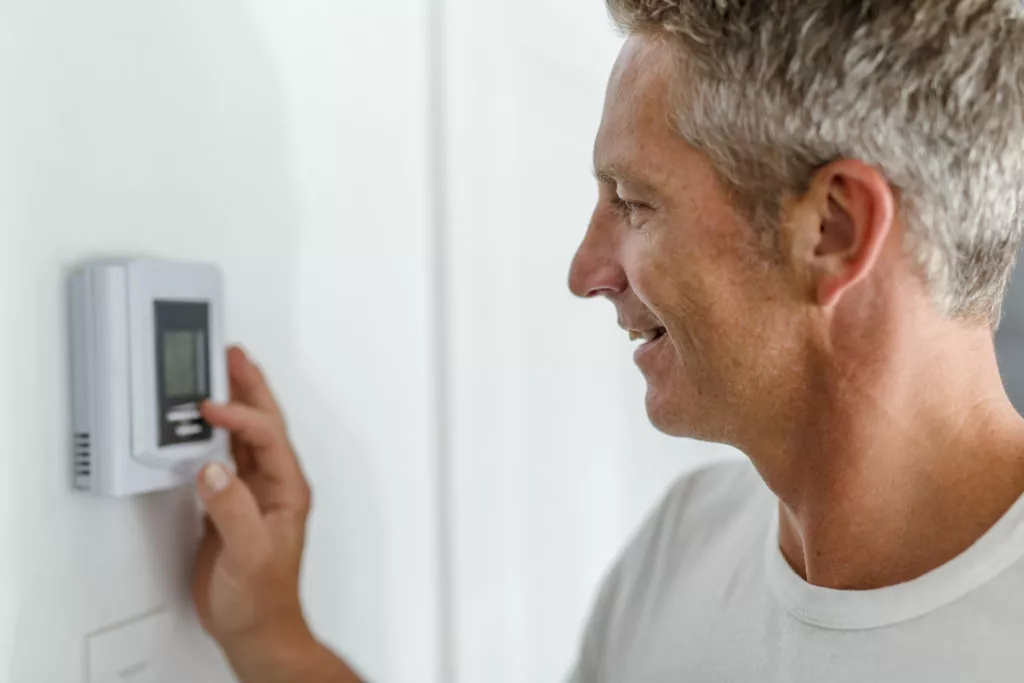
Pennsylvania weather can be sporadic. Sudden changes from scorching heat and humidity to cold, windy days require most Carbon County homeowners to adjust their thermostats constantly.
What temperature you set your thermostat to and how often you change it can impact your comfort and energy bills throughout the year. If you’re curious about the best practices for your air conditioner, read on for answers and advice from the seasoned experts at Andreas Plumbing, Heating & Air Conditioning.
[cta_button]
Factors That Influence Thermostat Settings
Before setting your thermostat, there are a few factors to consider:
- Climate: The local weather can affect your home’s temperature, depending on where you are in Pennsylvania.
- Energy Costs: Because extreme indoor temperatures can consume more energy, setting your home to moderate temperatures can lower utility bills.
- Personal Preference: Everyone has a preference for the temperature inside their home. Some like to be warm, while others enjoy being colder.
- Home Insulation: The quality of your insulation also affects thermostat settings. A well-insulated home requires less energy to maintain a comfortable temperature, allowing you to be flexible with your settings.
- Lifestyle: Your daily schedule also impacts thermostat settings. If your home is empty most of the day, you can be lax with your thermostat.
Best Temperature Setting for Pennsylvania Summers
Because Pennsylvania summers can get toasty (averaging between 75 and 90°F), setting your thermostat between 75 and 78°F when you’re home is recommended. This range balances indoor comfort with efficiency, ensuring you stay cool without excessively high energy bills.
A popular best practice for more savings is raising the temperature when no one is home. Raising the thermostat to between 82 and 85°F while you’re gone can make your AC unit work less, reducing cooling costs.
What Should I Set My Thermostat to in Winter?
To stay warm in Pennsylvania winter weather, we recommend setting your thermostat between 65 and 72°F when at home. This is an ideal range for staying comfortable without racking up a high HVAC bill.
When you’re not home, lower the thermostat to between 60 and 65°F. This practice can conserve energy and reduce costs.
Benefits of Using a Programmable Thermostat
A programmable thermostat is a great option for getting more comfort (and control) from your home’s HVAC system. These devices offer exceptional advantages, such as:
- Remote access: You can change the thermostat temperature from anywhere, whether you’re inside your house or on the go.
- Saves money: Programmable thermostats can help you save money by allowing you to adjust the temperature remotely to reduce energy usage.
- Energy efficiency: Programmable thermostats are also more energy-efficient, with automatic adjustments, precision control, and consistency.
- Increased home value: Smart home integration enhances property value, so you can make more money when you resell.
Should I Keep My Thermostat on “Auto” or “On”?
Most thermostats offer two main fan settings: “auto” and “on.” In “auto” mode, the fan only runs when the heating or cooling system adjusts the temperature. This mode is more energy-efficient because the fan isn’t always running. During “on” mode, the fan continuously circulates air throughout the home.
While the “on” mode does a great job of maintaining a more even temperature and improving air filtration, it uses more energy and can lead to higher energy costs. So, for most homes, choosing the “auto” setting is better for energy efficiency.
[cta_shortcode]
Programmable Thermostat & Smart Thermostat Installations
Upgrade to a smart, programmable thermostat to maximize your comfort and savings. We’re HVAC experts with decades of hands-on experience. Team Andreas is here for your thermostat installation, repair, or maintenance needs.
Contact us today to learn more about our process or to request your project estimate.
